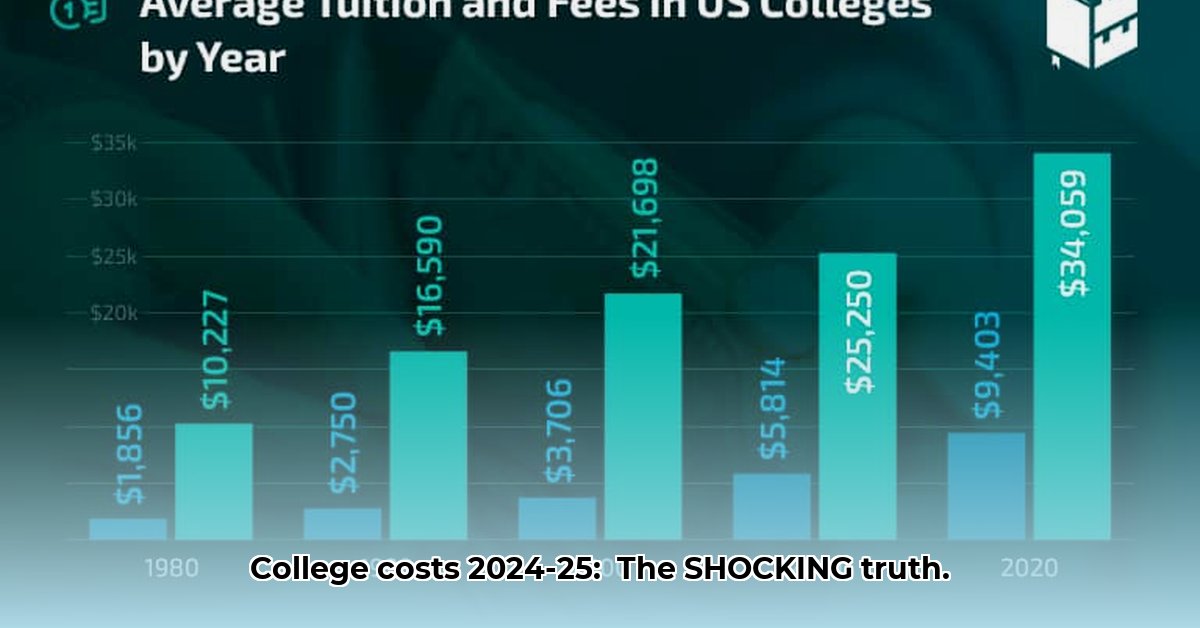
College Board Cost of College: Key Findings for 2024-2025
The College Board's annual report on college costs paints a complex picture for 2024-2025. While tuition continues its upward climb, exceeding inflation rates across all institution types (community colleges, four-year public universities, and private institutions), the impact of financial aid significantly alters the actual cost for many students. This report delves into the key trends and provides actionable steps for students, institutions, and policymakers.
Tuition's Persistent Increase: A Continuing Trend
Tuition and fees are rising steadily year over year, a trend consistent across all higher education sectors. This persistent increase poses a significant challenge to affordability. But is the sticker price the whole story? Let's explore the nuances.
The Mitigating Effect of Financial Aid
The College Board data highlights grant aid's crucial role in offsetting tuition increases. Government grants, university aid, and other forms of assistance significantly reduce the net cost—the amount students and families actually pay after aid is applied. In many instances, the net cost has even decreased for some since the early 2000s, despite escalating sticker prices. This underscores the importance of understanding the net cost rather than solely focusing on the published tuition rates. However, access to this aid varies significantly among students, leading to disparities in affordability.
How can we ensure equitable access to these crucial resources? This is a crucial question that requires immediate consideration.
Regional Disparities: Location Matters
College affordability shows stark regional discrepancies. States with strong public funding for higher education generally have lower tuition for in-state residents, while others face considerably higher costs. This regional variation underscores the need for tailored financial aid programs that address specific local economic conditions and funding levels. A national, one-size-fits-all approach clearly falls short in addressing the unique challenges faced in different regions.
Declining Enrollment: A Cause for Concern
A worrisome trend revealed by the report is a notable decline in college enrollment, particularly visible at community colleges. Despite increased financial aid, the substantial net cost remains a significant barrier for many families. This alarming decrease in student participation raises urgent questions about the broader accessibility of higher education. Further research is necessary to fully explore the underlying causes of this trend.
Navigating the Challenges: Actionable Steps for All Stakeholders
Addressing the affordability crisis requires a comprehensive, multi-pronged approach involving students, families, institutions, and government agencies. The following outlines actionable strategies for each group:
1. Students & Families:
- Thoroughly research financial aid options. Explore federal grants (like the Pell Grant), state grants, scholarships, and institutional aid.
- Create a detailed budget. Plan meticulously to understand personal financial limits and expectations.
- Consider less expensive options. Community colleges provide a more affordable pathway and allow for credit transfer.
2. Colleges & Universities:
- Enhance transparency of costs and financial aid. Clear, concise information empowers students to make informed financial decisions.
- Develop innovative financial aid models. Explore alternative approaches to ensure broader accessibility.
- Invest in efficiency improvements. Streamlining operations can potentially reduce costs.
3. Government Agencies:
- Increase federal and state funding for grant programs. Increased resources are needed to mitigate tuition increases.
- Develop programs addressing regional disparities. Support financial aid solutions tailored to specific regional needs.
- Invest in early childhood education. Early support can promote success and reduce future costs associated with higher education.
While financial aid plays a vital role in mitigating the impact of rising tuition costs, the challenge of college affordability persists. Addressing the continuing increase in tuition, regional variations, and the persistent issue of income inequality is crucial to ensuring access to higher education for all, regardless of socioeconomic background. Ongoing research and collaboration are essential to finding effective, sustainable solutions for this ongoing societal challenge.
Key Takeaways: Affordability in Higher Education
- Tuition increases continue to outpace inflation, creating significant financial strain for families.
- Financial aid is crucial, but its effectiveness varies significantly, creating unequal access to higher education.
- A comprehensive, multi-pronged approach involving students, institutions, and government is needed to address the rising costs of college.
This report utilizes data from the College Board's 2024-2025 report on college costs. Further research and detailed analysis are available from the College Board directly.
⭐⭐⭐⭐☆ (4.8)
Download via Link 1
Download via Link 2
Last updated: Sunday, April 27, 2025